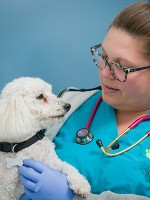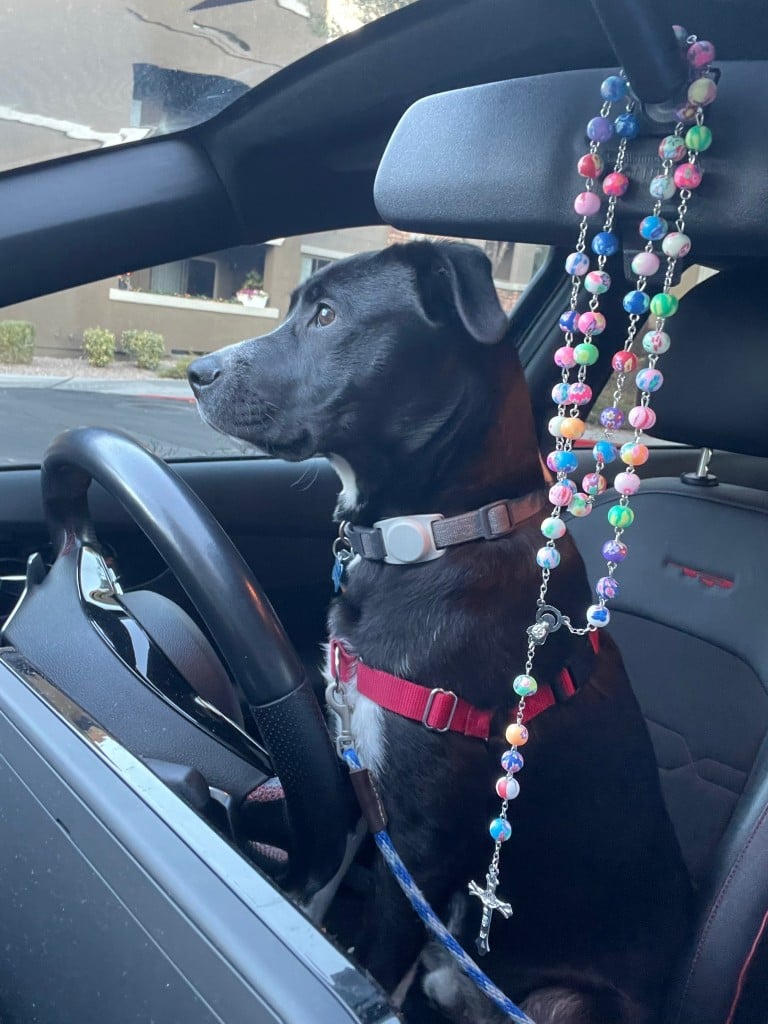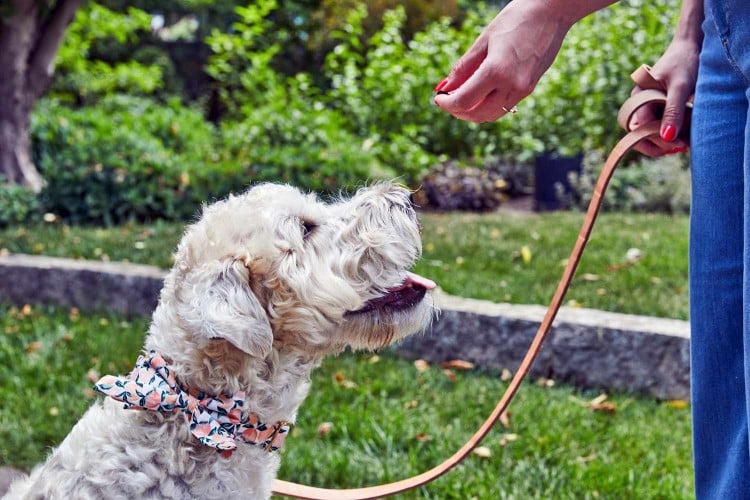We independently evaluate all recommended products and services. If you click on links we provide, we may receive compensation. Learn more.
Not only can running with your dog be good for you, but it can also do wonders for your pet's health. That's true especially now, when even our furry friends are suffering health setbacks as a result of the coronavirus (COVID-19) pandemic.
Would Your Dog Make a Good Running Partner?
Running with your pup requires changing your mentality. Unlike running solo, you are now sharing your run with your dog. It's imperative that you take the time to understand their running style, which may require checking your own ego. "You'll have to lean into the type of running that fits your dog, which will make the run much more enjoyable for you both," says Bryan Barrera, the founder of D.C. Dog Runner and author of The Ultimate Guide to Running with Your Dog.
It's also important to remember that there are certain dog breeds that just aren't cut out to be your running partner. Breeds like the greyhound and border collie may really enjoy the opportunity to stretch their legs and run with you. However, brachycephalic dogs with short muzzles—like bulldogs and pugs—can only run short distances before they will struggle to breathe. Even breeds that appear well-suited for running may not find it an enjoyable form of exercise in all cases.
For instance, dog breeds that do best in colder weather and have heavy coats, like the Siberian husky, will overheat easily in warmer temps and giant breeds like Great Danes will find running too hard on their bones and joints. Running long distances also isn't safe for puppies—especially those who're still growing. The general rule of thumb is to wait until your dog is mature before they hit the trails with you.
Can't Go Out for a Walk? Here's How to Train Your Dog on a Treadmill
Even if you do have an active dog breed that's well-suited for running, note that every dog has their own personality. "Some will take to running more than others," Barrera says. "Consider your dog's temperament, research his breed, and take him to the veterinarian for a physical checkup to ensure that this is a safe activity for him."
If for whatever reason, running with your pup proves to be tricky, you can (and should!) spend time learning with a certified professional dog trainer who uses positive reinforcement training techniques. Most importantly, you should always exercise patience when teaching your dog to run with you.
How Far Should You Run With Your Dog?
If you've never been on a run with your pup before, it's best to start slow. "This way, if you notice your dog struggling, it allows you to go back to a run/walk rotation to avoid overuse or injury. At the same time, if your dog responds well to the activity, you can increase the duration of the run slowly in five minute increments," Barrera recommends. "I prefer measuring by time rather than distance," he adds.
Keep in mind that just like for humans, rest days are equally important for our furry friends. "A day of rest is crucial," Barrera says. Ideally, you would give your dog a day of rest between each run, he adds.
Another thing to take note of is the behavior of your dog that day. If they seem lethargic and uninterested, it might be best to scale back on your runs, which might mean adding in more rest days or decreasing the duration of your runs. "The goal should be to create a positive habit of running," Barrera shares. "Giving them rest will encourage that because they'll be physically ready to run again, which will lead to the long-term goal of improved health."
How to Keep Both You and Your Dog Safe While Running Together
Find Running Gear That Works for You
Using a short leash while running with your dog is key. Something between four and six feet is ideal, Barrera says. It's important to make sure the leash is not too short or too long—your dog needs to be able to move comfortably beside you. Using a leash that includes a traffic handle in times when your dog needs to be closer can be helpful and increase safety measures when you are running where they might be cyclists, other runners, or even cars. A body harness is a good option for many dogs, just always make sure the harness fits. A well-fitting harness should not restrict leg movement and will never pinch or pull the fur.
Position Your Dog Correctly
"The optimal running style for physical and health safety is on your side with slack in the leash," Barrera recommends. That said, if your dog tends to lead out front, make sure they're not pulling and that there's always some leeway in the leash. If they tend to trail behind, just make sure they remain on your side. The goal is to avoid letting them run directly behind you, otherwise, the leash will hit or get tangled in your legs, which jeopardizes the safety of both you and your dog.
The Surface You Run on Matters
Every surface will present its own challenges for your dog. But if you were to go in order of safety, Barrera says dirt trails and grass are the safest, then sand, and finally, pavement.
Aside from the buoyancy of the surface, heat retention is an important thing to keep in mind. Streets and sidewalks, for instance, retain their heat. So, if you plan on running with your dog after work, even if the air is cool, be sure to use the back of your hand to test the temperature of the pavement because it still might be very hot. Similarly with sand, cool wet sand is preferable, since hot dry sand can not only hurt your dog's paws, but it can also be hard on their joints if they run on it for too long.
8 Dog Paw Balms to Soothe, Protect, and Pamper
Be Mindful of the Weather
Thanks to their furry coats and circulatory systems, most dogs have a resting body temperature between 99.5 to 102.5 degrees F. Needless to say, they're sensitive to warm weather. The best running temps for running with our dogs is actually between 40 degrees and 65 degrees F. Any higher than that, or if it's humid, and it can quickly become unsafe for your dog—especially if they have a coat on the thicker side. In most locations in the U.S., late May through August are likely to be too hot for running with your dog.
On the flip side, it's also important to know how cold is too cold for your dog for your winter runs. As we've shared before, even though the exact temperature that dogs get cold varies, you shouldn't keep your dog outside for an extended period of time if the temperature drops to 30 degrees and below.
Types of Dog Running Gear You'll Need:
If you're bringing Fido along for the jog, you'll need more than just a pair of tennis shoes.
Leash
While there are several running specific leashes on the market, Barrera recommends the 4-foot Kong Traffic Leash. You'll also want to avoid using a retractable leash because they can often lead to injury, Barrera says.
Harness
A well-fitting harness can be a great option for any dog, but are especially useful if you have a dog who pulls a lot or has a sensitive or thin neck. Some good options are the Ruffwear Trail Runner System, the Non-Stop Dogwear Freemotion Harness, or the Tuft Mutt Dog Harness.
Water
Your dog can't ask for a water break, so it's your responsibility to make sure your pup stays hydrated. That's why it's important to carry a water bottle as well as a collapsible bowl with you on your runs. Some signs of dehydration to look out for include a dry nose, excessive panting, and an abrupt slowing of pace.
Portable First-Aid Kit
Research a simple portable homemade first aid kit that you can build and carry when you'll be on trails when immediate medical attention may not be available.
Tick Protection
Tick bites are a major concern for people running with their dogs. Luckily, there are several ways to prevent this from happening. If you're running in heavily wooded trails, make sure you stick to a path, away from all of the shrubbery.
You'll also want to perform a thorough check for ticks after each run to make sure your pup is in the clear, and remove any ticks from your dog's body ASAP if you find them.
Finally, talk to your veterinarian about which tick preventative is right for your dog. There are an array of sprays, shampoos, and oral pills available for your pet's protection, but most pet health professionals recommend a monthly preventative to protect them against pesky parasites.
Poop Bags
While it may be ideal for your pet to do their bathroom business before you hit the trail together, sometimes nature calls at the most inopportune times! Always be prepared to pick up their poo with a doggy-doo bag or this fabulous eco-friendly option. Bonus points if you can plot out a run near the dog park so you can dispose of their waste in a receptacle made for dog waste and avoid carrying it for the full length of your jog (we've all been there). If you don't want to deal with the clunkiness of a poop bag carrier, simply keep a bag in your pocket in case your pup needs to do their thing. It's better to be safe than sorry!





